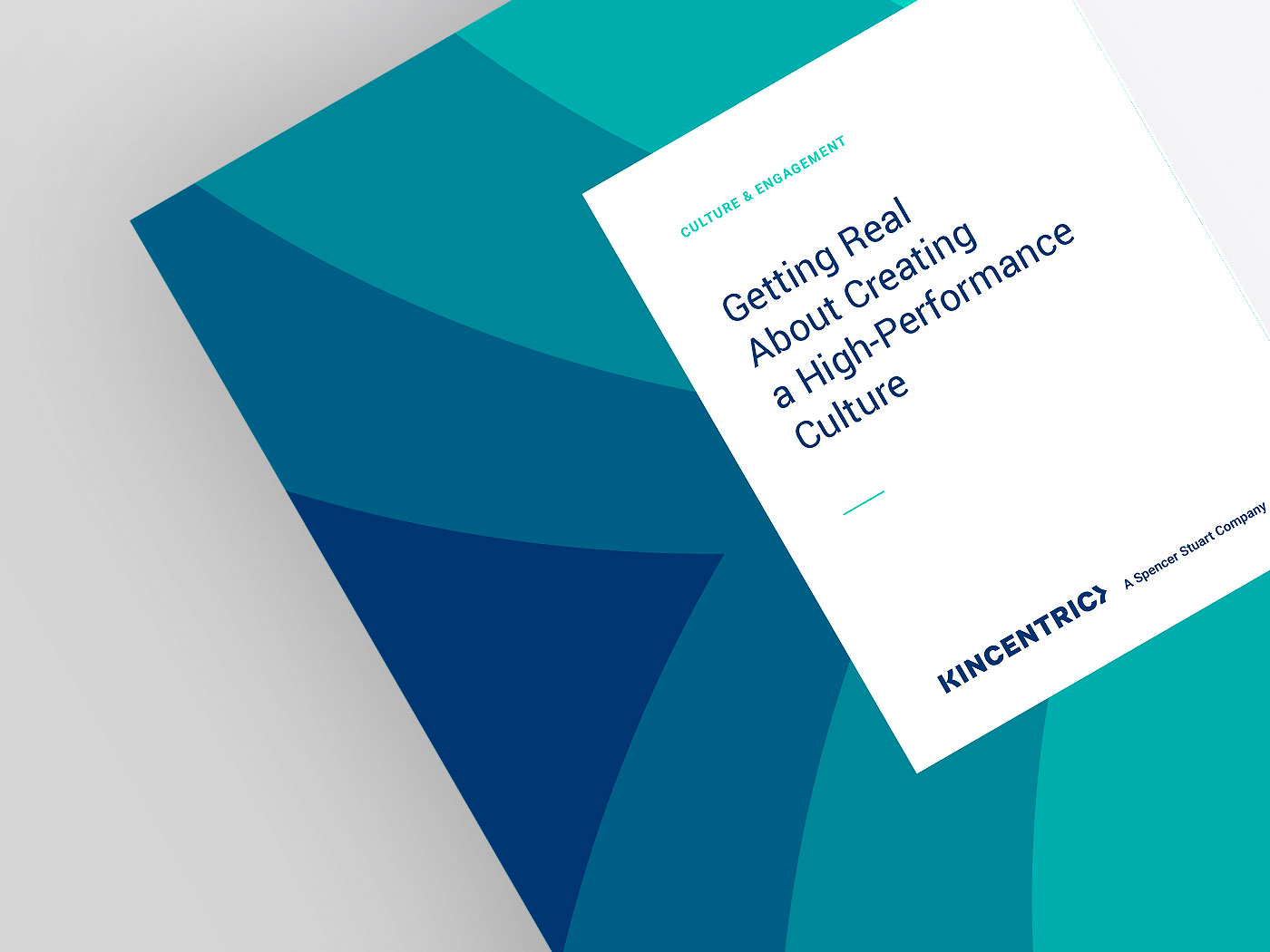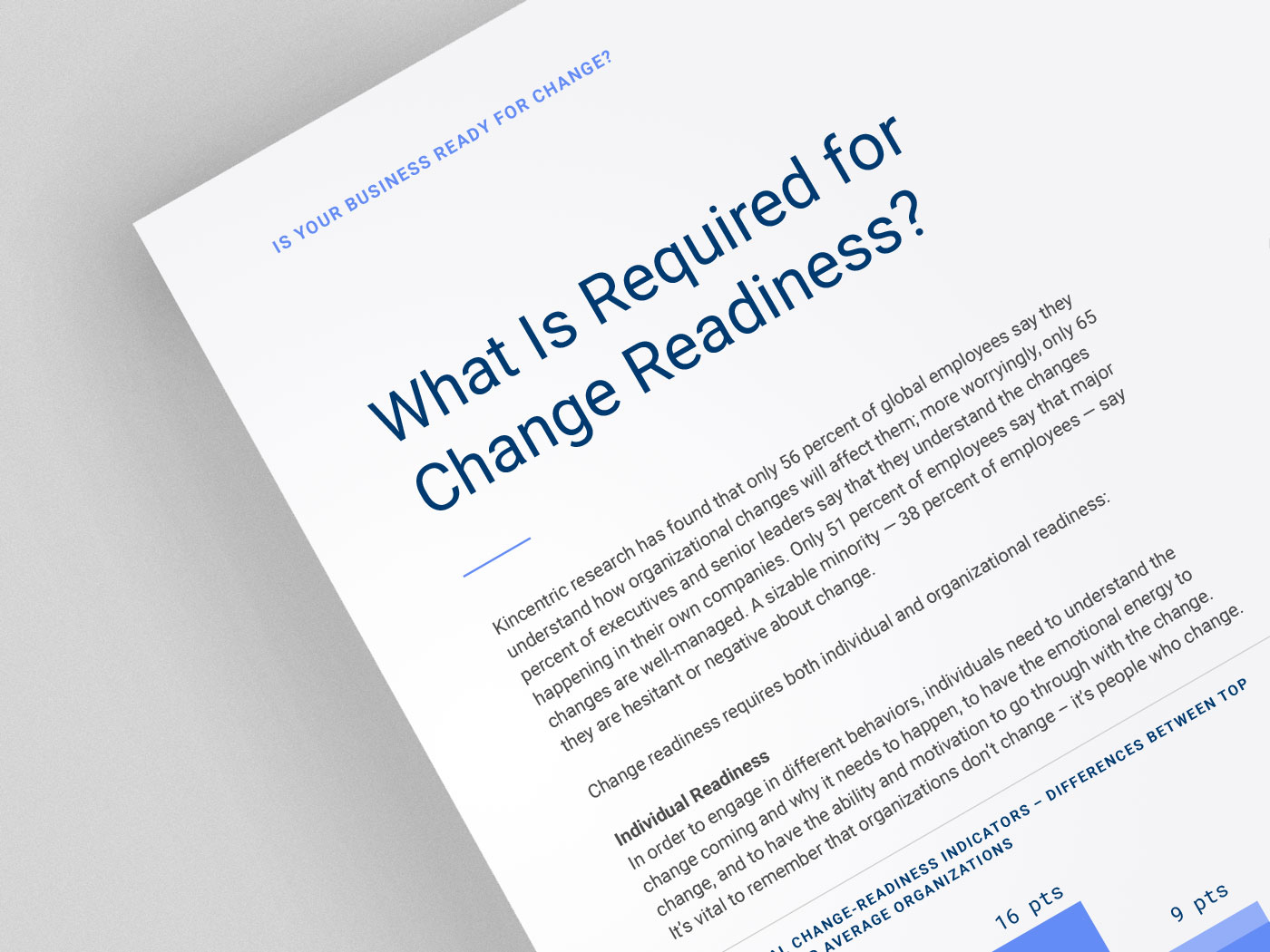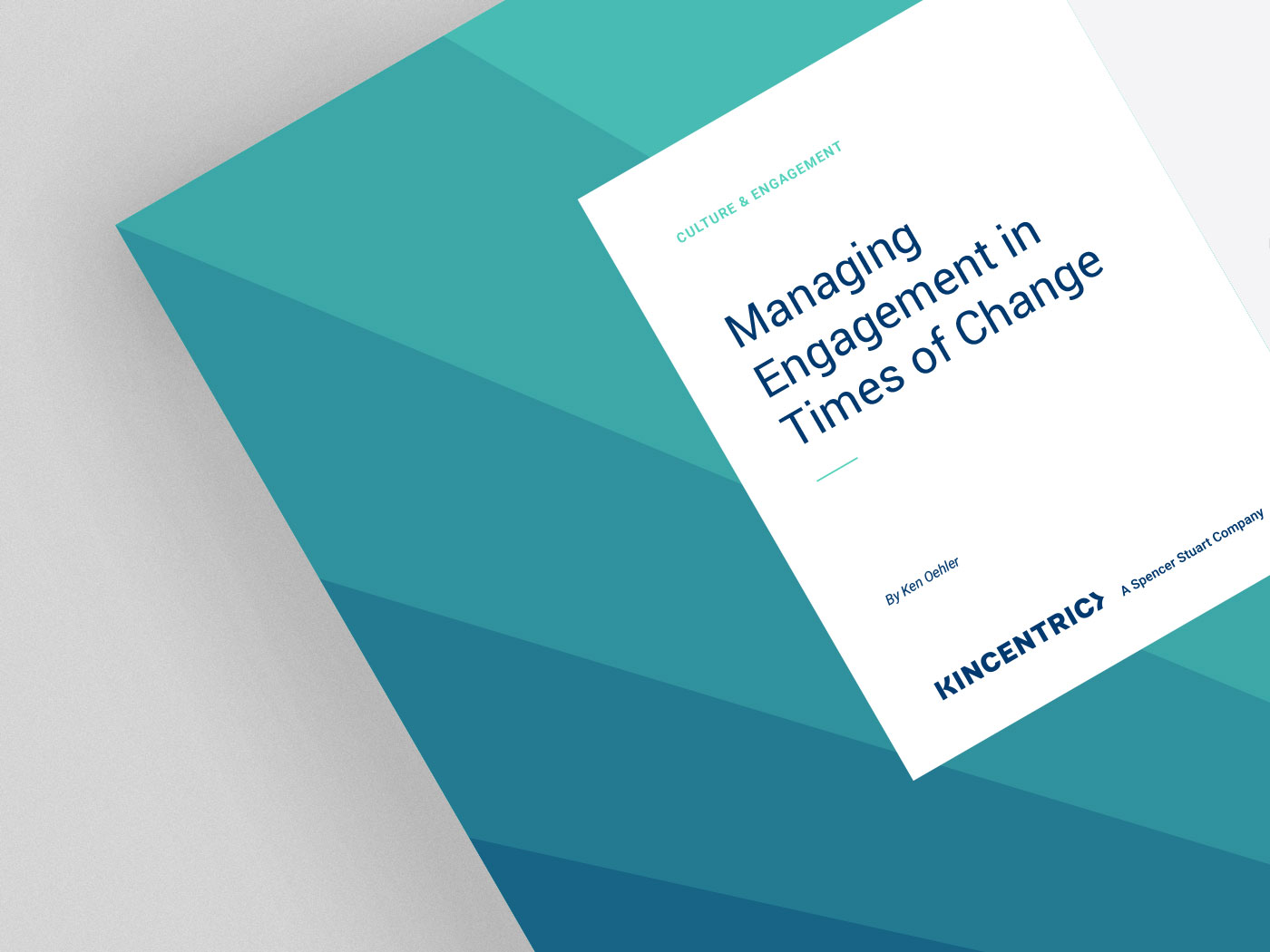
Nearly half (46%) of the organizations in our study identified defining or aligning culture as a key priority, but, in many cases, there is insufficient attention paid to aligning culture with value creation.
Organizational culture is often defined as a set of shared assumptions about how to think, feel and act. Pragmatically speaking though, culture is the way work gets done. High performance cultures are marked by shared beliefs, decision making, and behaviors that align with operational and customer value creation.
Our research shows that the areas that matter most to creating a high-performance culture are:
We would like to thank Don MacPherson, Ken Oehler, Ph.D. and Manasi Vartak for contributing their insights to this article.



We have identified five tangible steps organizations can use to assess, understand, and take action on the employee engagement levels of employees during organizational change.
Multiple translations are available.